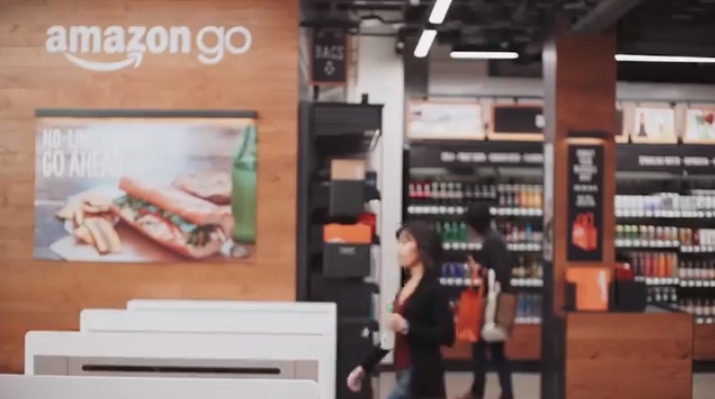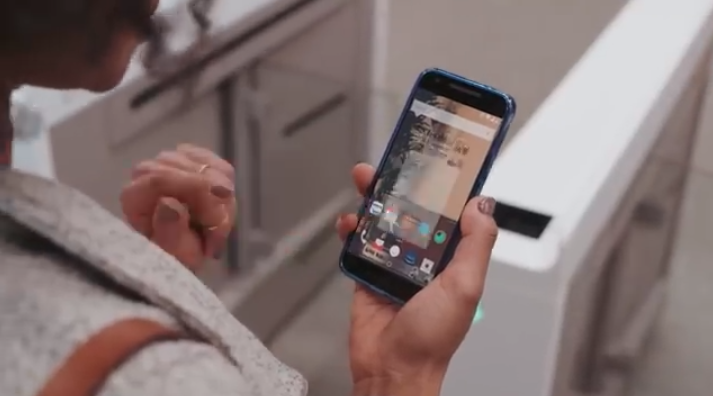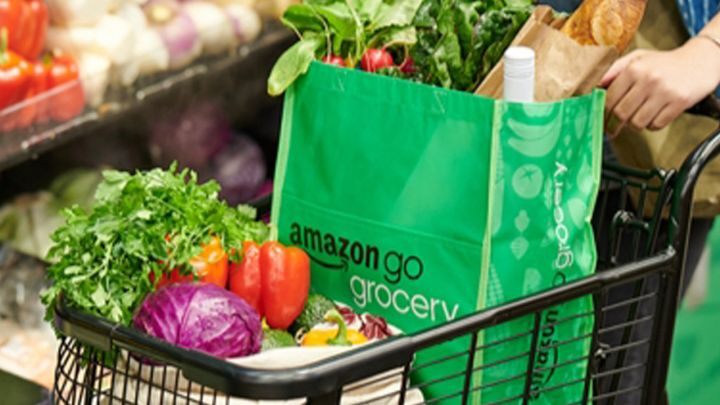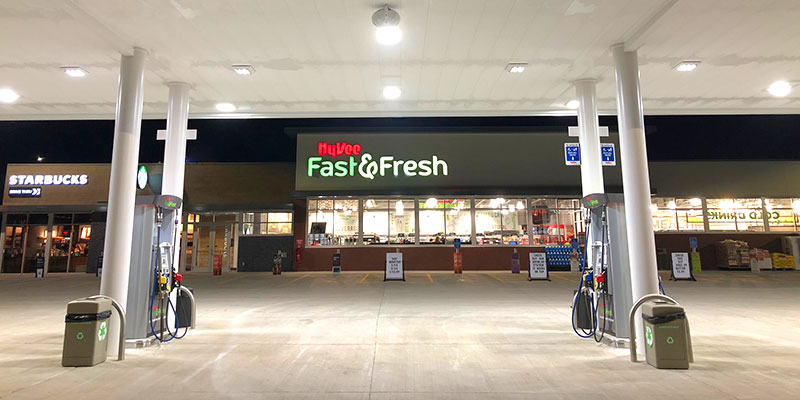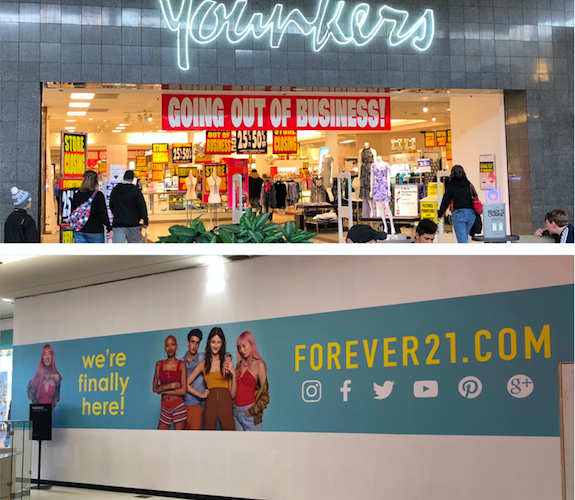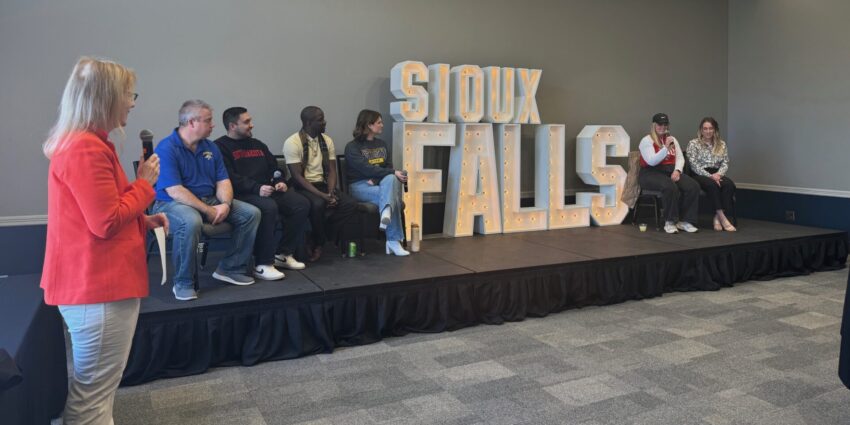Jodi’s Journal: Amazon’s cashier-less grocery store is sign of industry disruption
March 1, 2020
There has never been a grocery store like the one that opened this past week in Seattle.
The Amazon Go Grocery, a prototype store from the online retail giant, is designed to allow customers to walk in, barely encounter staff and walk out with purchases paid for without standing in a line.
Download an app and scan your smartphone to enter, and then simply start shopping. A vast network of cameras and sensors powered by machine learning tracks the items you take with you.
Except for that, the 10,000-square-foot store looks every bit like a traditional grocery store. There’s produce, a frozen section and plenty of household staples.
It’s better to see it for yourself, as I did watching this tour from CNET:
“One of the things that was very important to us was we wanted to hide all the complexity behind so that when you’re in the store you can be as naturally shopping and focus on what you want … versus worrying about any of the complexity that goes behind it,” Dilip Kumar, Amazon’s vice president of physical retail and technology, told the reporter.
Leave the store, and a receipt is emailed to you.
Amazon calls it “just walk out” technology. Here’s a video from the company that walks you through it step-by-step.
This is not Amazon’s first disruption of the grocery industry and certainly won’t be its last. While we haven’t experienced as much of it in this part of the country, in other markets Amazon is making big investments.
It’s opening a two-story grocery store in California in a former Toys R Us space – how’s that for irony – that reportedly will include robots helping with operational tasks.
In Tampa, it recently started one- and two-hour grocery delivery of meat, seafood, eggs, produce and other fresh items.
And remember, Amazon acquired Whole Foods several years ago – another reason I think we will eventually see one in Sioux Falls as part of a nationwide rollout – and the technology being showcased in that new Seattle Amazon grocery store could be scaled out.
This piece from USA Today sourced former Amazon executive Britain Ladd in reporting that Amazon’s goal is to bring “just walk out” technology not just to Whole Foods “but unleash a wave of Amazon food stores nationally to compete with the likes of Kroger and Walmart.”
One driving force is lowering labor costs, which Ladd said represent half of Whole Foods’ expenses.
“He believes with cameras and sensors and, eventually, robots to fulfill orders, Amazon will be selling more groceries than Kroger by 2027 and surpass Walmart by 2035,” USA Today reported.
But Walmart didn’t get to be Walmart by not responding to changing markets.
This piece from Food and Wine previews a program that could be launched soon that would allow Walmart to offer an Amazon Prime-style membership, including delivery service and other perks.
So where does this leave legacy players such as Hy-Vee, which recently announced operational changes in our market? The decision to forego 24-hour retail operations generated what I found to be a surprising amount of interest from our readers, but it’s hardly shocking against an industry backdrop like I’ve just detailed.
“There’s a lot of talk over what the store of the future is going to look like,” Randy Edeker, Hy-Vee’s CEO, told the trade publication Grocery Dive in February 2019. “I don’t think anybody knows, but we have to experiment a little bit.”
Grocery Dive noted:
“Amid depressingly low margins and a competitive squeeze that promises to keep tightening, traditional grocers like Hy-Vee are trying to take back control with experimental formats that address weaknesses in their legacy stores — namely, speed and convenience.”
This cannot be easy to execute. Think of the Sioux Falls market’s evolution in the past decade. We might not have Amazon-controlled robots, cameras and sensors in our grocery market, but we do now have four Walmart stores where we used to have two. We have multiple Fareway and Aldi stores, which all compete on price.
Hy-Vee is testing a lot of intriguing concepts in other markets that I hope I can discuss with someone there at some point. There’s Fast & Fresh, which seems to be an updated take on a convenience store, with lots of ready-to-go items accepted by Aisles Online pickup lockers outside for online orders.
“Just a few miles away, HealthMarket sells kombucha, cauliflower pizza crust, probiotics, fresh produce and lighter offerings from major brands like Ben & Jerry’s,” Grocery Dive reported.
“In downtown Des Moines, Fourth + Court, which opened in 2017, caters to young shoppers and empty nesters alike, many of whom live in the three-story apartment building above the store.”
From an app-enabled store in Seattle to a store with adjusted hours in Sioux Falls – and so many examples in between – they are both significant and subtle signs that this industry is changing. And given it’s one that touches as big of a range of consumers than probably any other, it’s one worth watching. As grocery goes, other customer-facing businesses could follow.

